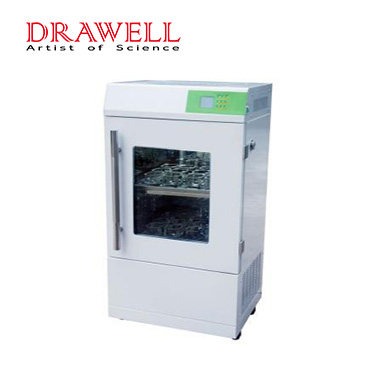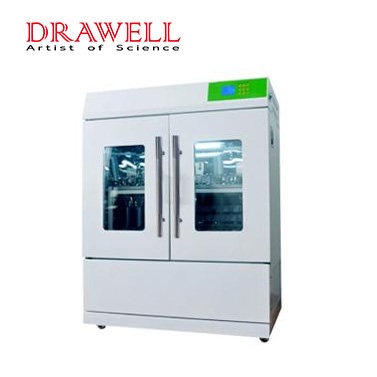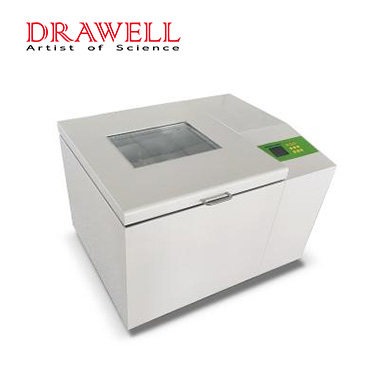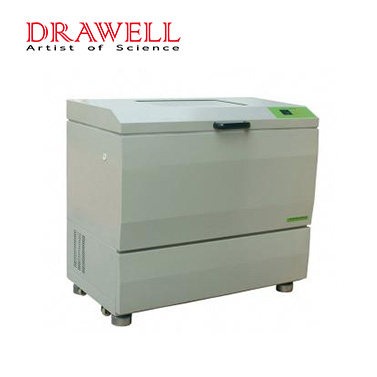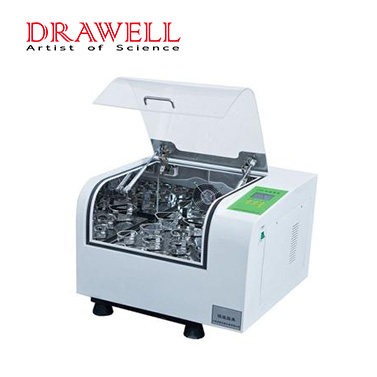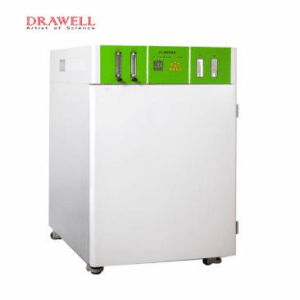In laboratory settings, a shaking incubator combines heating, shaking, and controlling temperature to create optimal conditions for growing cultures or conducting experiments. Whether you’re working in molecular biology, microbiology, biochemistry, or cell culture applications, selecting the right shaking incubator is crucial for achieving accurate and reproducible results. This article provides an overview of different types of shaking incubators, and the key factors to consider when choosing the right type for your laboratory applications.
What are Shaking Incubators
Shaking incubators are laboratory devices that combine temperature control and agitation to provide optimal conditions for the growth of microorganisms, cells, or other biological samples. These incubators feature a shaking platform that moves the samples in a circular (orbital) or back-and-forth (reciprocal) motion to ensure even mixing, aeration, and uniform temperature distribution. Shaking incubators are commonly used in applications such as cell culture, bacterial growth, enzyme reactions, and protein assays, where controlled conditions are crucial for successful experimental outcomes.
Different Types of Shaking Incubators
This chart provides an overview of the common types of shaking incubators available in laboratories.
| Type of Shaking Incubator | Shaking Motion | Applications | Key Features |
| Orbital Shaking Incubator | Orbital (circular motion) | General laboratory use, cell culture, bacterial growth, enzyme reactions | – Gentle, consistent shaking – Ideal for delicate samples – Suitable for standard lab applications |
| Reciprocal Shaking Incubator | Reciprocal (back-and-forth) | Vigorous mixing required for fermentation, bacterial growth in large vessels | – More aggressive shaking – Useful for applications needing intense agitation |
| Microplate Shaker Incubator | Orbital or Linear | High-throughput screening, assays, protein expression analysis | – Compact design – Suitable for microplates – High-speed shaking capability |
| Benchtop Shaking Incubator | Orbital | Small-scale experiments, general use in research and clinical labs | – Compact and space-saving – Suitable for small volumes or low-capacity applications |
| High-Throughput Shaking Incubator | Orbital | Large-scale, high-throughput screening, drug discovery | – High sample capacity – Precision control – Can handle larger volumes or multiple microplates |
| CO₂ Shaking Incubator | Orbital | Cell culture and microbiology applications needing CO₂ atmosphere | – CO₂ control for pH balance – Ideal for sensitive biological cultures |
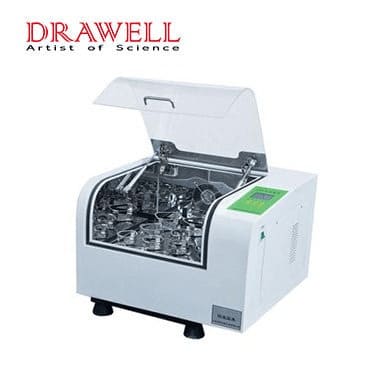
Key Factors to Consider for Choosing the Right Type of Shaking Incubator
1. Understand Your Laboratory Needs
Before diving into specifications and features, it’s essential to consider what your laboratory actually needs from a shaking incubator. Some key questions to ask include:
- What types of cultures or experiments will you be running (e.g., bacterial growth, cell culture, enzyme reactions)?
- What volume of samples will you be handling (e.g., small test tubes, large flasks, or microplates)?
- Do you require precise temperature control, or is a more general temperature range sufficient?
Identifying your laboratory’s specific applications will guide you in making the best choice for your needs.
2. Consider the Type of Shaking Motion
Shaking incubators typically offer two types of motion: orbital and reciprocal.
- Orbital Shaking: This is the most common motion where the platform moves in a circular, orbital motion. It’s ideal for most general applications, including cell cultures, bacterial growth, and protein assays.
- Reciprocal Shaking: In this motion, the platform moves back and forth in a linear motion. This type of shaker is generally used for more vigorous shaking requirements or when greater agitation is needed.
Choosing between the two depends on the specific nature of your experiment. Orbital shakers are usually preferred for more delicate samples or applications requiring consistent, gentle mixing. In contrast, reciprocal shaking is better suited for applications where more vigorous mixing is necessary.
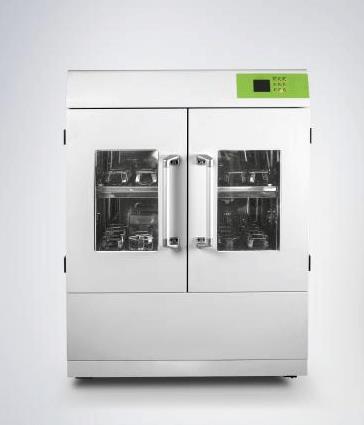
3. Temperature Control
One of the core functions of a shaking incubator is maintaining an optimal temperature range for sample incubation. Precise temperature control is critical in ensuring the success of temperature-sensitive processes, such as enzyme reactions or microbial growth.
When selecting a shaking incubator, consider the following temperature-related aspects:
- Temperature Range: Most laboratory applications require a temperature range from 4°C to 80°C, but some specific processes may need a wider or narrower range. Ensure the incubator can handle your required range.
- Uniformity and Stability: A good shaking incubator should maintain a uniform temperature across the entire chamber. Inconsistent temperatures can result in inaccurate or unreliable results, especially for sensitive experiments.
- Heat Recovery Time: Check how quickly the incubator can recover its set temperature after opening the door. Fast recovery is important for maintaining consistent experimental conditions.
4. Load Capacity and Sample Size
The capacity of your shaking incubator should match the volume and size of your samples. Larger labs with higher throughput will require an incubator that can handle large flasks, culture vessels, or multiple microplates. Smaller laboratories may benefit from more compact models that can handle smaller sample volumes.
Key considerations include:
- Platform Size: Check the size of the shaking platform and whether it’s adjustable or able to accommodate various sizes of culture vessels, flasks, or petri dishes.
- Sample Volume: Larger incubators allow for bigger sample volumes or multiple samples at once, while smaller incubators are ideal for low-volume applications like microplates or test tubes.
5. Speed and Shaking Frequency
The speed of shaking is another important factor when choosing a shaking incubator. Different applications may require different speeds for optimal results:
- Gentle Shaking (30-200 rpm): Suitable for delicate cultures like cell growth, protein expression, or gentle mixing of solutions.
- Vigorous Shaking (200-500 rpm): Used for applications like bacterial growth in larger vessels, where more aggressive shaking is needed for aeration and mixing.
Consider the speed range needed for your work, as well as the ability to precisely control and adjust the shaking frequency.

6. Control and User Interface
Modern shaking incubators often come equipped with advanced digital control systems that make it easy to set and monitor temperature, shaking speed, and time. Key features to look for include:
- User Interface: A clear and intuitive interface makes it easier to set parameters and monitor the status of your experiment.
- Programmable Settings: Some shaking incubators allow for programmable cycles, which can be beneficial for experiments requiring multiple phases of shaking or temperature conditions.
- Display and Alerts: Consider an incubator with a digital display and visual or audible alerts to notify users of changes in conditions or any issues that may arise.
7. Safety Features
Safety should always be a top priority when choosing lab equipment. Look for the following safety features:
- Overheat Protection: Prevents overheating and protects your samples and the incubator.
- Door Safety Switch: Ensures that the shaker stops moving if the door is opened during operation, which prevents accidents and sample contamination.
- Automatic Shutdown: Some models offer automatic shutdown or alarms if the temperature or shaking parameters go out of range.
8. Noise and Vibration
Although shaking incubators are essential for mixing and agitation, excessive noise or vibration can disrupt laboratory work and cause discomfort. Look for models designed to reduce noise and vibrations during operation, particularly if you’re working in a shared laboratory environment.
9. Budget and Cost Considerations
While shaking incubators come in a wide range of prices, your budget will ultimately determine which model you choose. Be sure to balance features with cost:
- Entry-Level Models: These are typically compact, with basic temperature and shaking speed controls suitable for low-volume or less complex applications.
- Mid-Range Models: These offer additional features such as programmable settings, larger capacity, and higher precision in both temperature control and shaking frequency.
- High-End Models: These offer advanced features such as real-time monitoring, advanced control systems, and larger capacities for high-throughput laboratories.
Remember, investing in a reliable shaking incubator with the right features for your laboratory can save you time, improve accuracy, and help ensure successful experimental outcomes.
Drawell is a trusted supplier of shaking incubators designed to meet the needs of various laboratory applications. Offering a wide range of models, from compact benchtop units to high-throughput systems, Drawell ensures that each incubator delivers precise temperature control and reliable shaking performance. With superior quality and competitive pricing, Drawell provides cost-effective solutions for laboratories looking to optimize their experimental conditions.

Summary
Choosing the right shaking incubator for your laboratory is a decision that will impact the quality and reliability of your experiments. Consider factors such as temperature control, shaking motion, capacity, speed, safety features, etc, to ensure that the incubator matches your specific application needs. Through carefully evaluating your requirements and understanding the features available, you can make an informed choice that supports your research goals and maximizes productivity in your laboratory.
Related Products Recommendation
Get Quote Here!
Latest Posts
What Next?
For more information, or to arrange an equipment demonstration, please visit our dedicated Product Homepage or contact one of our Product Managers.

